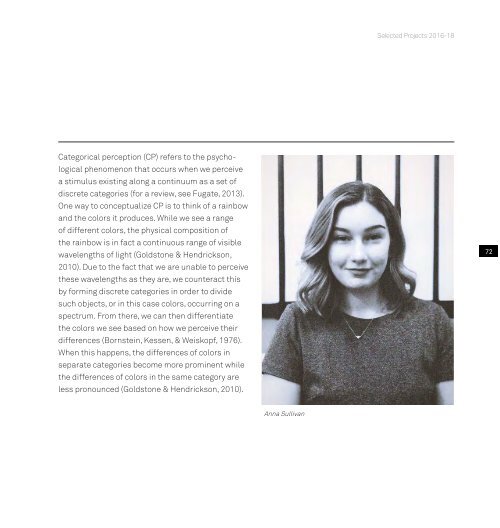Undergrad_Book_16-18_Pge_View_Print_no print marks_compressed
Create successful ePaper yourself
Turn your PDF publications into a flip-book with our unique Google optimized e-Paper software.
Selected Projects 20<strong>16</strong>-<strong>18</strong><br />
Categorical perception (CP) refers to the psychological<br />
phe<strong>no</strong>me<strong>no</strong>n that occurs when we perceive<br />
a stimulus existing along a continuum as a set of<br />
discrete categories (for a review, see Fugate, 2013).<br />
One way to conceptualize CP is to think of a rainbow<br />
and the colors it produces. While we see a range<br />
of different colors, the physical composition of<br />
the rainbow is in fact a continuous range of visible<br />
wavelengths of light (Goldstone & Hendrickson,<br />
2010). Due to the fact that we are unable to perceive<br />
these wavelengths as they are, we counteract this<br />
by forming discrete categories in order to divide<br />
such objects, or in this case colors, occurring on a<br />
spectrum. From there, we can then differentiate<br />
the colors we see based on how we perceive their<br />
differences (Bornstein, Kessen, & Weiskopf, 1976).<br />
When this happens, the differences of colors in<br />
separate categories become more prominent while<br />
the differences of colors in the same category are<br />
less pro<strong>no</strong>unced (Goldstone & Hendrickson, 2010).<br />
72<br />
Anna Sullivan



